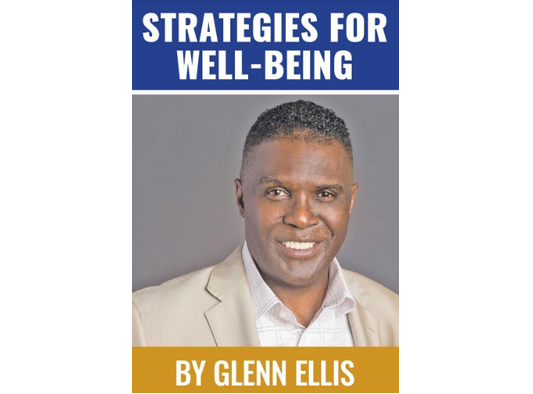By Glenn Ellis
Americans spend more on prescription drugs – average costs are about $1,200 per person per year – than anyone else in the world. U.S. prices for the world’s 20 top-selling medicines are, on average, three times higher than in Britain. Elsewhere, U.S. prices were six times higher than in Brazil and 16 times higher than the average in the lowest-price country, which was usually India.
In fact, U.S. prices for top brand-name drugs jumped 127 percent between 2008 and 2014, compared with an 11 percent rise in a basket of common household groceries.
It’s true that Americans take a lot of pills. But what really sets the U.S. apart from most other countries is high prices. Cancer drugs in the U.S. routinely cost $10,000 a month. Even prices for old drugs have spiked, as companies have bought up medicines that face no competition and boosted charges.
For decades, the high cost of prescription drugs has been an issue in the U.S. And no wonder – the U.S. spends twice as much on prescription drugs as other comparable western nations. And pharmaceutical spending is on the rise. Prescription drug price increases can lead some patients to not be able to afford critical medicine, causing them to skip doses of their medications or split pills, or force them to abandon treatment altogether. Physicians and patients are often left in the dark about how and why prices fluctuate year after year when ingredients stay the same.
The current backlash first erupted in 2013 when Gilead Sciences (a major pharmaceutical company) released the groundbreaking hepatitis cure Sovaldi at $84,000 for a 12-week course. The steep price and stampede of patients to get the drug led many insurers to restrict coverage to the sickest patients. Pharmaceutical companies argue that they need robust profits to bankroll the development of medical advances and that restricting prices would harm innovation. They highlight the benefits of medicines such as Sovaldi, which has a cure rate superior to treatments that cost nearly as much.
Prescription drug price negotiations often happen behind closed doors, leaving patients and physicians out of the negotiating room despite the impact drug pricing has on the health and treatments of patients.
The Cost Of Insulin
Perhaps, there is no clearer example than the cost of insulin for diabetic patients.
Diabetes is a serious disease that can often be managed through physical activity, diet, and the appropriate use of insulin and other medications to control blood sugar levels. People with diabetes are at increased risk of serious health complications including premature death, vision loss, heart disease, stroke, kidney failure, and amputation of toes, feet, or legs. Nearly 1 in 4 four adults living with diabetes – 7.2 million Americans – don’t know they have the condition. Only 11.6 percent of adults with prediabetes know they are at risk.
African Americans are disproportionately affected by diabetes: 13.2 percent of all African Americans aged 20 years or older have diagnosed diabetes. African Americans are 1.7 times more likely to have diabetes as whites.
Those with Type 1 (insulin dependent) diabetes must inject daily insulin in order to survive. While Type 2 diabetes is far more common than Type 1, nearly one-third of those with Type 2 must also inject insulin on a daily basis. For some, the cost of diabetic supplies – particularly insulin – can lead to negative health consequences. Thirty percent of the 29 million Americans with diabetes use insulin–alone or along with other medications–to keep blood glucose in check.
Insulin is not like other drugs. It’s a natural hormone that controls our blood sugar levels – too high causes vision loss, confusion, nausea, and eventually, organ failure; too low leads to heart irregularities, mood swings, seizures, loss of consciousness.
Insulin, discovered in 1921 has no generic competitors – only brand-name products are produced. Unlike chemical drugs, which can be simply replicated, insulin is a biological material – made up of proteins synthesized through a cell line that’s unique to each formula.
Pharmaceutical companies Novo Nordisk, Eli Lilly and Sanofi’s insulins are all slightly different in this way, and no “generic” or un-branded copy could be made without accessing these companies’ patented materials and processes.
From a regulatory perspective, insulin makers are protected from generic competitors under patent law. A patent allows a manufacturer to sell a product unchallenged for a certain number of years prior to approving a generic. In many cases, insulin makers continue to “tweak” current insulin products in order to extend their exclusivity rights.
The cost of insulin nearly tripled between 2002 and 2013 and has doubled again since then. The list price is over $300 for a single vial of medicine, and most people with Type 1 diabetes need multiple vials every month to live.
Between 1987 and 2014, the wholesale price of a 20-ml vial of Humulin U500—a concentrated form of long-acting insulin that more and more people with diabetes are using to control blood sugar—rose from $170 to $1,200. By January of 2017, the list price was $1,400. That cost is typically lower with insurance or with discount programs.
Still, for some people the price is unmanageable.
Glenn Ellis, is Research Bioethics Fellow at Harvard Medical School and author of Which Doctor?, and Information is the Best Medicine. Ellis is an active media contributor on Health Equity and Medical Ethics. Listen to Glenn, on radio in Birmingham or V94.9, Sundays at 7:50pm, or visit: www.glennellis.com.




